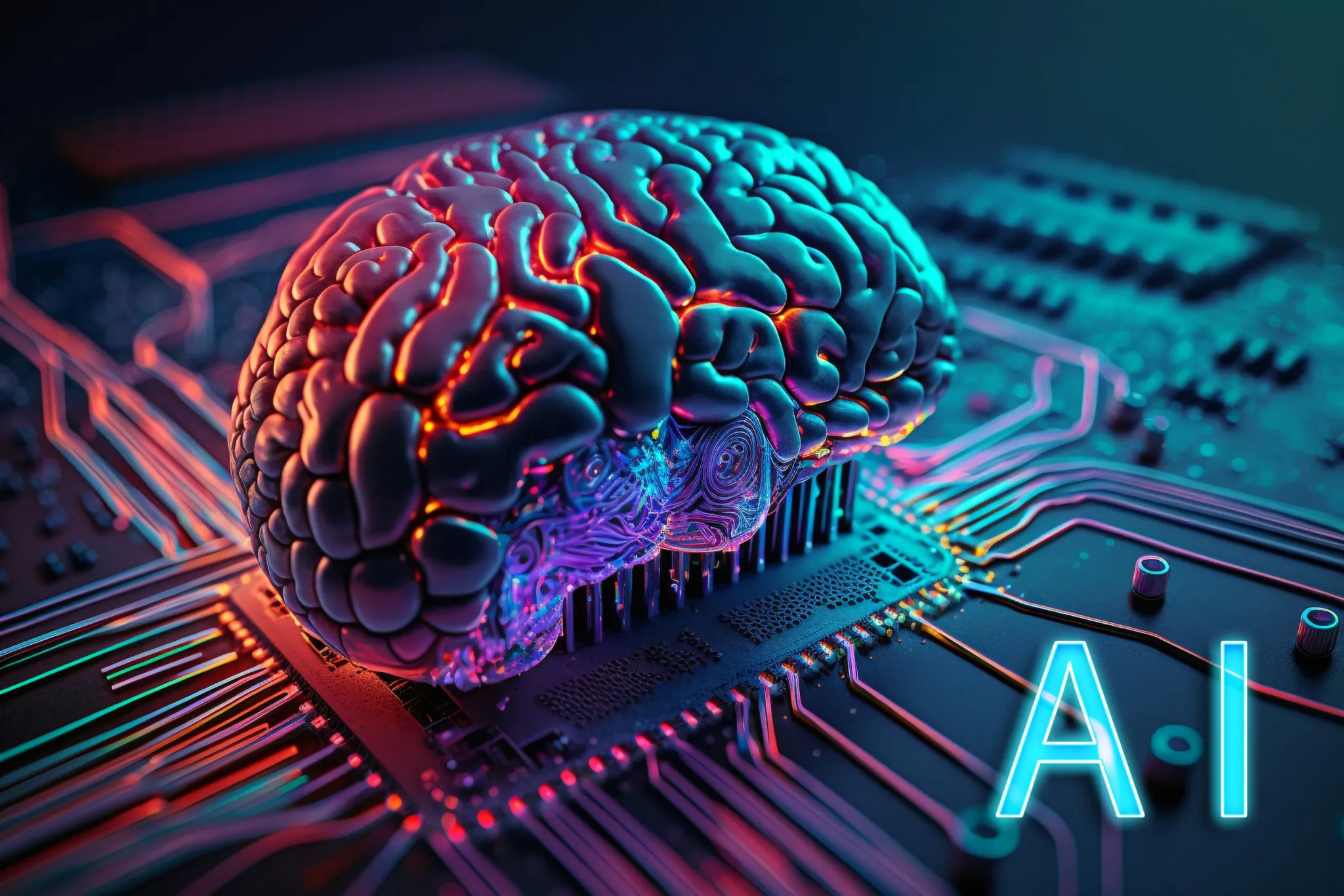Disruptive technologies have generated important changes in the corporate scenario, mainly in terms of productivity and value generation. Among the most relevant innovations, we find artificial intelligence or AI. From a simple perspective, we define this technology as the ability of machines to think, analyse, learn and decide in a rational way that is analogous to how human beings do.
Today, we want you to learn about artificial intelligence in complete detail-
What is AI or Artificial Intelligence (AI)?
Artificial intelligence, as we know it today, consists of a multidisciplinary science with numerous approaches. Its operations are based on the combination of enormous amounts of digital data and intelligent algorithms. These components let machines “learn” automatically by having the capacity to read and understand guidelines and data. That is so that they analyze and act following logical reasoning and behave in a way that is comparable to that of humans.
All of this is done to raise employee satisfaction levels and enhance people’s quality of life!
A Brief Overview Of History
The history of artificial intelligence presents many protagonists and only one objective: to develop machines capable of processing data logically and acting rationally, like human beings. The history of this technology is thought to have started in 1956, immediately following World War II, and includes scientists like Alan Turing, who created the Turing test to determine whether a machine could converse in writing as if it were a person. —, John McCarthy, Marvin Minsky, Herbert A. and Allen Newell.
AI was first thought to be a branch of study whose primary goal was the creation of new technology. Thanks to McCarthy, who defined it as “the science and engineering of creating intelligent machines” and the formalisation of the concept at the expert meeting at Dartmouth College where artificial intelligence effectively became a science.
After extensive research and little progress, artificial intelligence made a significant breakthrough in 1964 with the creation of the first chatbot. It was named Eliza, and it could only do automatic conversations because it was run by algorithms and data based on keywords.
Over time, as new research has been completed and the digital transformation has progressed, artificial intelligence (AI) has enhanced the analytical ability of its machines via the use of data and algorithms. This development has made it possible to create tools that are more and more in line with the way people think and are analysed by humans.
How Does Artificial Intelligence Work?
To promote learning, AI systems require constant data input. Thus, the combination of these three pillars has produced artificial intelligence:
- High-quality data models and structures that enable precise data processing, classification, and analysis.
- Access to a vast amount of unprocessed data.
- Reliable and reasonably priced computing equipment that facilitates quick and effective data processing.
Taking into account its foundations, it is clear that AI is a consequence of the joint work of big data, cloud computing and excellent data models.
Additionally, systems can learn by taking in, organising, and analysing data to recognise, distinguish, and understand a wide range of objects, patterns, people, and reactions. This is made possible by the convergence of cutting-edge technologies and algorithms.
In terms of the technologies that facilitate the process by which machines can acquire the ability to reason logically, we discover:
1. Machine Learning: One of the technologies that helps AI provide the desired outcomes is machine learning (ML), which encourages systems to learn on their own and adapt. Thus, without requiring the system to be programmed to arrive at a predetermined conclusion, machines can make decisions as a result of data processing and the detection of standards. A good example of an ML application is personalised recommendations from streaming systems.
2. Depth Learning: A more precise and accurate learning process is made possible by deep learning, which is a deeper form of machine learning that produces even more exact and accurate outcomes. DL mimics the structure of neuronal connections in the human brain since it makes use of intricate neural networks. As a result, the system can comprehend vast amounts of data and discover intricate patterns. It is commonly used in biometric speech and/or picture recognition software because of its strong development.
3. Natural language processing: Machine learning has made it possible for machines to interact and communicate with humans. This happens as a result of the system’s ability to analyse, comprehend, recognise patterns, and naturally express itself in human language—including speech. Sentiment analysis, processes based on algorithms that determine the content of a particular text, and chatbots in the user/consumer service industry are areas where natural language processing excels. As a result, the combination of technologies allows systems to make exact decisions that are entirely independent and backed by concrete digital facts. This fact promotes the expansion of human reason and the development of more precise replies and solutions.
Importance of AI for companies
The following paragraphs highlight the significance of AI for businesses from the standpoint of its most pertinent advantages:
- Process Automation: By reducing human mistakes and inconsistency, automation not only reduces the workload of corporate teams but also speeds up dynamics and improves outcomes. The centralization and cross-referencing of data, as well as the deeper, objective and exact analysis carried out by AI, avoid subjectivity by basing results only on hard and real data.
- Lowering of costs: Reduced costs are the inevitable outcome of task simplification, mistake error, and improved performance. Collaborators’ performance and productivity rise when procedures are streamlined and facilitated. As a result, it lowers costs, mostly because it makes it possible to create more in less time, and this speed enhances the business’s operational efficiency.
- Innovation: We can detect, process, and respond in real-time using advanced algorithms, which allows for the prompt development of a response or solution. Organisations can get a competitive edge by uncovering unsolved market trends and winning over the public thanks to artificial intelligence’s creative approach.
- Information security: Many industries now routinely use voice, facial, and digital recognition technologies, particularly those that handle large volumes of sensitive data and need additional data protection precautions.
Top Three Most Used AI Tools in 2024:-
We cannot close this article without presenting the basis of 3 of the most popular and necessary AI tools for the proper functioning of a business:
1. Customer relationship management software or CRM:
You must implement a strong CRM (customer relationship management) system if you wish to provide solutions that are more in line with the needs of the target market. In addition to raising the likelihood of gaining client loyalty, effective customer relationship management also improves communication with brand advocates. Apart from centralising the data, this platform enables segmentation of the data, transforming it into pertinent information for sales decision-making, offering personalisation, and customer service, as it facilitates the identification of response standards, the effectiveness of collaborators in the field, and the creation of more efficient communication strategies.
2. Customer Support Chatbots:
The customer service industry deals with repetitive questions ranging from hours of operation to the payment methods accepted at the business. We can provide consumers with efficient and timely customer service by utilising chatbots. This is made feasible by the responses being automatically generated by taking keywords into account and modifying the system’s algorithms. These robots not only aid with communication but also reduce expenses and raise public satisfaction.
3. Unified communications platforms:
These connect many channels, including chat, social media, email, and the phone, to make professional communication easier. Additionally, because it makes it possible to communicate information and other types of files quickly, securely, and incredibly easily, this solution greatly strengthens the relationship with the company’s clients, suppliers, and other audiences. One of the best instances of unified communication solutions is found in contact centres. Businesses can expedite and streamline problem-solving by opting for a superior substitute that boasts an easy-to-use interface and pertinent features. In general, CRM systems and other tools can be connected with next-generation unified communications platforms.
That’s it for now!
We hope you now see how crucial artificial intelligence is to improving an organisation’s performance, operational efficiency, and outcomes. These days, technology is viewed as a potent ally in decision-making because its instruments offer trustworthy and safe data, encouraging more objective insights into the company’s current state. The fact that AI’s tools enable a data-driven society is among its most remarkable features.





